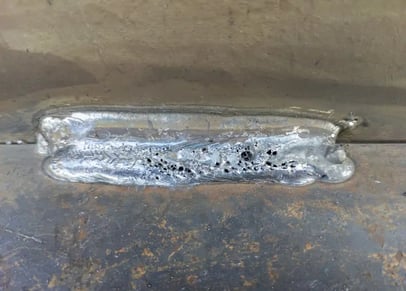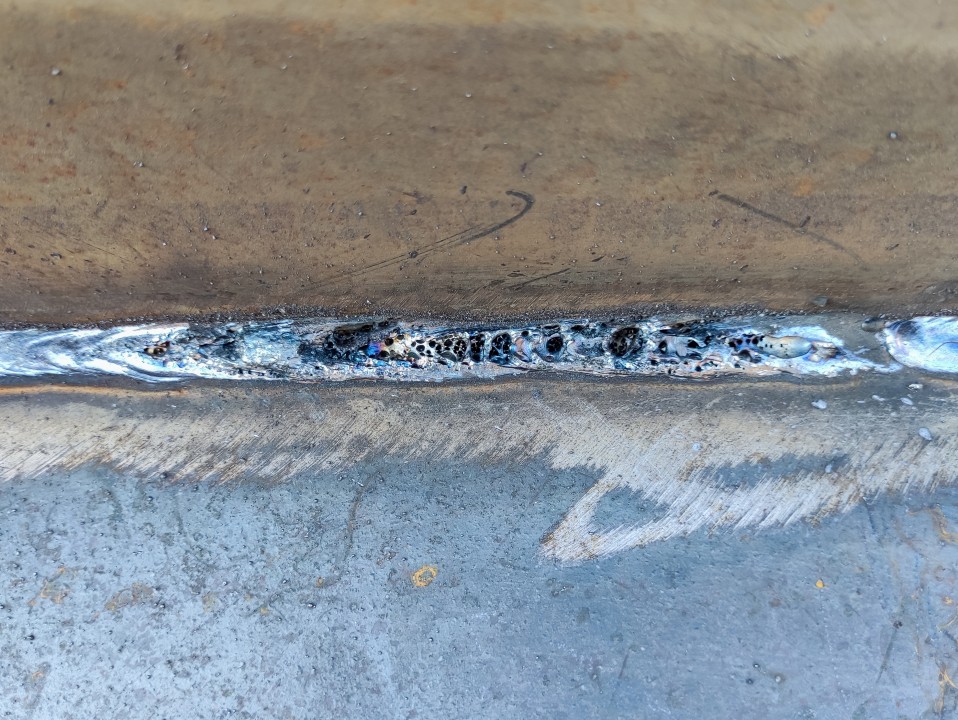Discover What is Porosity in Welding and Its Effect on Architectural Stability
Discover What is Porosity in Welding and Its Effect on Architectural Stability
Blog Article
The Scientific Research Behind Porosity: A Comprehensive Overview for Welders and Fabricators
Comprehending the complex systems behind porosity in welding is vital for welders and producers making every effort for impressive workmanship. From the composition of the base products to the ins and outs of the welding process itself, a multitude of variables conspire to either aggravate or relieve the presence of porosity.
Recognizing Porosity in Welding
FIRST SENTENCE:
Examination of porosity in welding exposes important understandings right into the integrity and high quality of the weld joint. Porosity, defined by the presence of cavities or gaps within the weld metal, is a typical concern in welding processes. These gaps, otherwise correctly resolved, can compromise the structural stability and mechanical residential properties of the weld, leading to potential failures in the ended up item.

To identify and evaluate porosity, non-destructive testing techniques such as ultrasonic testing or X-ray inspection are typically utilized. These methods permit for the recognition of inner issues without jeopardizing the stability of the weld. By examining the dimension, form, and circulation of porosity within a weld, welders can make educated decisions to boost their welding procedures and attain sounder weld joints.

Elements Influencing Porosity Formation
The incident of porosity in welding is influenced by a myriad of elements, ranging from gas protecting efficiency to the complexities of welding specification settings. One important aspect contributing to porosity formation is inadequate gas shielding. When the protecting gas, generally argon or CO2, is not successfully covering the weld swimming pool, atmospheric gases like oxygen and nitrogen can pollute the molten metal, leading to porosity. In addition, the sanitation of the base products plays a considerable function. Pollutants such as corrosion, oil, or dampness can evaporate throughout welding, developing gas pockets within the weld. Welding specifications, consisting of voltage, present, travel speed, and electrode type, likewise impact porosity development. Making use of improper settings can produce too much spatter or warm input, which subsequently can lead to porosity. The welding strategy utilized, such as gas steel arc welding (GMAW) or protected metal arc welding (SMAW), can affect porosity formation due to variants in heat circulation and gas insurance coverage. Comprehending and regulating these elements are important for minimizing porosity in welding procedures.
Results of Porosity on Weld Quality
The visibility of porosity also damages the weld's resistance to deterioration, as the caught air or gases within the voids can react with the surrounding setting, leading to degradation over time. Furthermore, porosity can prevent the weld's ability to my link stand up to stress or impact, additional endangering the total top quality and integrity of the welded structure. In essential applications such as aerospace, automobile, or structural building and constructions, where safety and security and longevity are extremely important, the harmful effects of porosity on weld high quality can have extreme repercussions, stressing the importance of reducing porosity through appropriate welding strategies and procedures.
Strategies to Decrease Porosity
To improve the high quality of bonded joints and make sure architectural integrity, welders and producers utilize certain see this methods targeted at minimizing the formation of spaces and cavities within the product throughout the welding process. One reliable approach to reduce porosity is to make certain appropriate product preparation. This includes thorough cleaning of the base steel to eliminate any pollutants such as oil, oil, or dampness that could contribute to porosity development. Additionally, making use of the appropriate welding specifications, such as the right voltage, current, and take a trip rate, is important in preventing porosity. Maintaining a constant arc size and angle during welding also helps in reducing the likelihood of porosity.

Moreover, choosing the appropriate protecting gas and keeping correct gas circulation prices are crucial in decreasing porosity. Making use of the appropriate welding strategy, such as back-stepping or employing a weaving movement, can likewise assist distribute warm evenly and lower the possibilities of porosity development. click here for info Making sure appropriate ventilation in the welding environment to get rid of any potential resources of contamination is vital for attaining porosity-free welds. By carrying out these strategies, welders can successfully reduce porosity and generate high-quality welded joints.

Advanced Solutions for Porosity Control
Executing sophisticated technologies and innovative techniques plays a critical function in attaining exceptional control over porosity in welding procedures. One sophisticated solution is the usage of sophisticated gas combinations. Shielding gases like helium or a blend of argon and hydrogen can assist lower porosity by supplying better arc security and improved gas protection. In addition, employing innovative welding techniques such as pulsed MIG welding or modified environment welding can additionally assist minimize porosity issues.
One more innovative remedy involves making use of advanced welding devices. For example, making use of devices with integrated attributes like waveform control and innovative source of power can enhance weld quality and decrease porosity dangers. The implementation of automated welding systems with precise control over parameters can significantly minimize porosity defects.
Additionally, integrating advanced monitoring and evaluation innovations such as real-time X-ray imaging or automated ultrasonic testing can aid in finding porosity early in the welding procedure, enabling for immediate restorative activities. Generally, incorporating these innovative options can substantially boost porosity control and enhance the total top quality of bonded elements.
Conclusion
In verdict, understanding the scientific research behind porosity in welding is essential for welders and makers to produce high-grade welds - What is Porosity. Advanced services for porosity control can better improve the welding process and ensure a solid and reputable weld.
Report this page